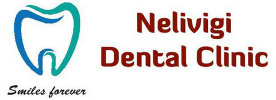Professional dental cleanings are the best way to achieve and maintain great oral health. Did you know that cavities are not the number one cause of tooth loss? While brushing your teeth is important, you also need to take care of your gums. Periodontal (gum) disease is the primary reason why people lose their teeth. Periodontics is an area of dentistry that focuses on the prevention, diagnosis, and treatment of gums and related structures.
Periodontal disease is a common problem that affects approximately 80% of adults in the United States. The early stage of the disease is called gingivitis. Patients with gingivitis suffer from painful, bleeding, and swollen gums. If left untreated, patients develop an advanced stage of periodontal disease called periodontitis. The condition causes major damage to the tissue and bone that supports the teeth, which can result in tooth loss.
The goal of dental hygiene is to prevent oral health problems. Your mouth is the main entrance to your entire body. Removing harmful bacteria from your teeth and gums will protect you from cavities and periodontal disease while benefiting your overall well being.
A professional cleaning will remove plaque, tartar, and stains from your teeth using specialized instruments. The frequency of regular checkups will depend on your current oral health. Your hygienist can help you develop an appropriate prevention program.
Plaque is a film of bacteria that forms on the surface of your teeth over time. When combined with sugar and carbohydrates, plaque can damage your tooth enamel and cause cavities. Plaque also contributes to gum inflammation and periodontal disease.
If plaque is not removed, it can harden into a solid deposit called tartar. Once formed, tartar attracts more plaque, which causes tartar buildup. Unfortunately, your toothbrush cannot remove tartar – it can only be removed during a professional dental cleaning.
The bacteria in plaque and tartar can irritate the gums and cause gingivitis, a mild form of periodontal disease. The symptoms of gingivitis include inflammation, redness, swelling, pain, and bad breath. You may also notice that you gums bleed easily, particularly after brushing or flossing. This form of periodontal disease does not cause permanent damage to the bones and surrounding tissues. With daily brushing, flossing, and frequent professional cleanings, the symptoms of gingivitis can be completely reversed.
Patients with gingivitis can develop a condition called periodontitis. If left untreated, plaque and tarter can move into soft tissue pockets that form between the teeth and gums, causing a severe infection. The symptoms of periodontitis include redness, tenderness, bad breath, swollen gums, shiny gums, bleeding, and loose teeth. As the infection spreads, it damages the bone and tissue that holds the teeth in place. In severe cases, some of the teeth may need to be removed.
- Schedule an appointment with your dentist if you have any of the following symptoms :
- Persistent bad breath.
- Red, swollen gums.
- Painful, bleeding gums.
- Difficulty chewing.
- Loose teeth.
A dentist can examine your teeth and gums to determine if you have periodontal disease.
Treatment for periodontal disease will depend on the severity of the condition. If you’ve been diagnosed with periodontal disease, you should immediately schedule a professional cleaning to remove existing plaque and tartar.
Treatment efforts will focus on controlling the infection. Patients with moderate to severe periodontal disease will typically need to schedule a professional cleaning every 3 months. In severe cases, your dentist may need to remove loose or infected teeth to keep the infection from spreading.
In between professional treatments and procedures, patients with periodontal disease should regularly brush and floss their teeth at home. Lifestyle changes, including tobacco cessation, can facilitate recovery and improve your oral health. Your dentist can help you determine the right treatment plan for you.
